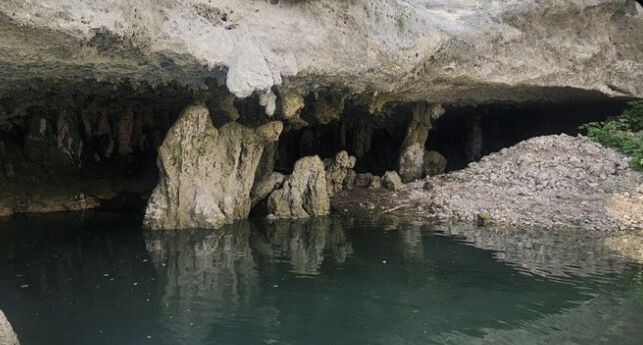Record-Low Water Levels Uncover Hidden Underwater Cave and Remnants of Century-Old Communities at Canyon Lake in Texas
Canyon Lake in Texas reaches historic low water levels, exposing an underwater cave and remnants of communities over a century old. The contrast highlights the challenges posed by changing environmental conditions.
Water levels at Canyon Lake in Texas have reached historic lows, revealing an underwater cave and remnants of communities that stood over a century ago. The man-made lake, spanning 8,200 acres with 80 miles of shoreline, was constructed in 1958 to mitigate flooding and preserve water. It has faced severe drought conditions and high temperatures this summer, resulting in record-low water levels. On Wednesday, the lake's level fell to 890.89 feet, approximately 18 feet below normal. JM Perez, who works on the lake, captured images of the usually submerged cave and described the sighting as bittersweet.
The communities of Hancock and Crane’s Mill, founded by German immigrants in the 1850s, previously occupied the space now underwater. Remnants of a house and parts of the Hancock bridge have become visible as the water recedes. The contrast in water levels has been striking, with recent photos showing a vast entrance to the cave and rock formations with stalactites hanging from the ceiling. Local resident Porsche Devol expressed sadness about the situation, stating that she hadn't seen the water this low since she moved to the area. As the water levels continue to drop, additional challenges arise.
Trash and other items have also surfaced. The US Army Corps of Engineers, which oversees the lake, regularly monitors the water levels and closes lakeside recreation facilities for safety concerns when the water is too low. They have urged caution for boaters and swimmers due to underwater hazards like tree stumps and large rocks now near the surface. While the receding waters reveal fascinating glimpses of the past, they also highlight the complex challenges posed by changing environmental conditions and their impact on the region.




